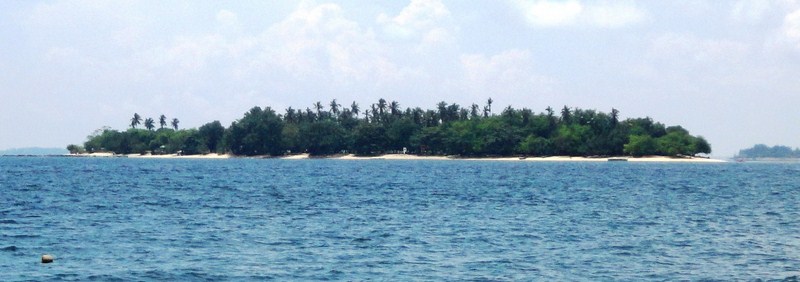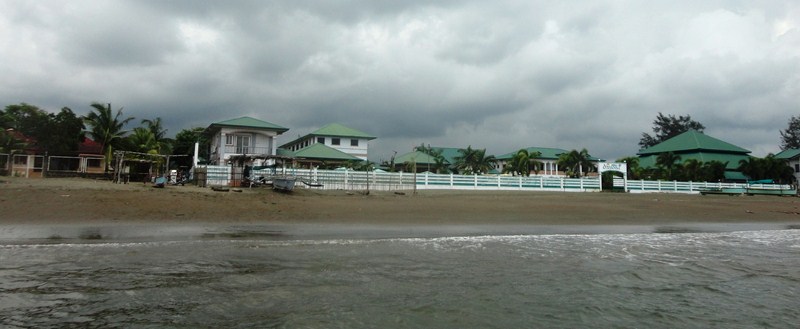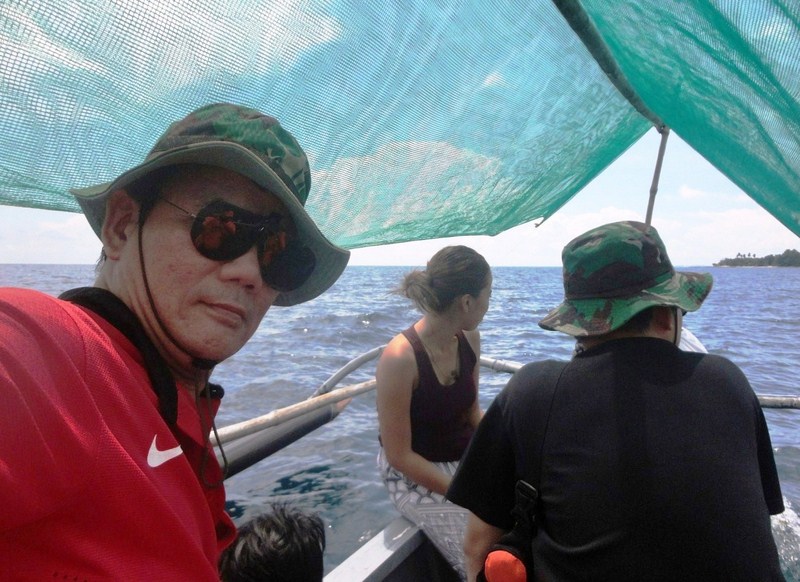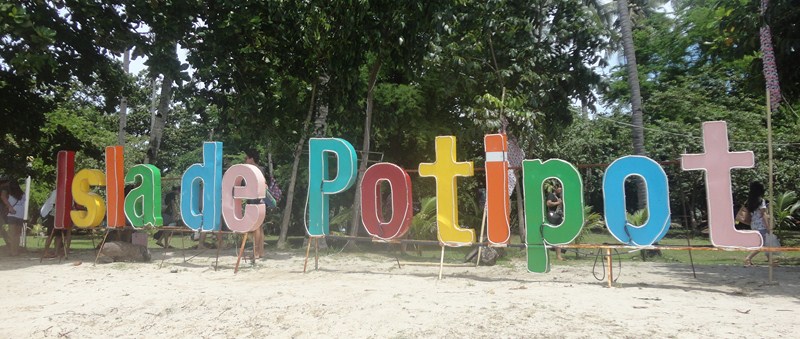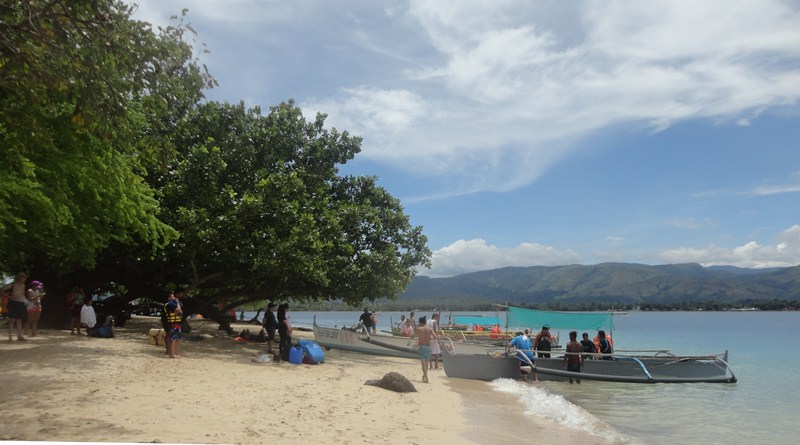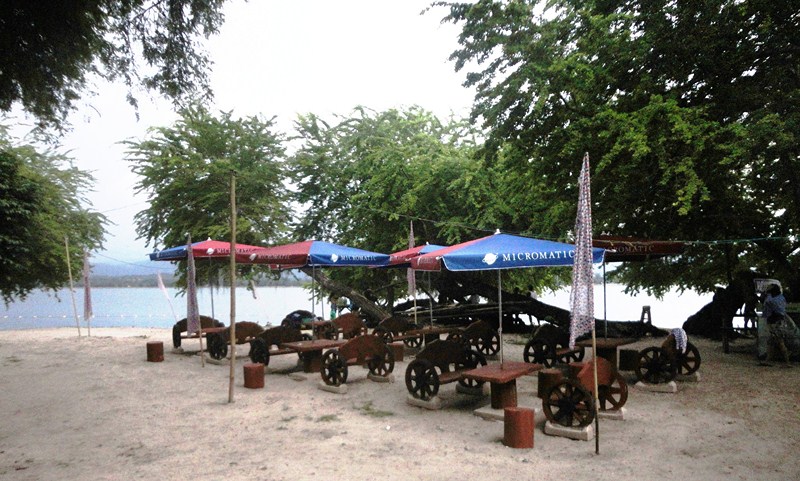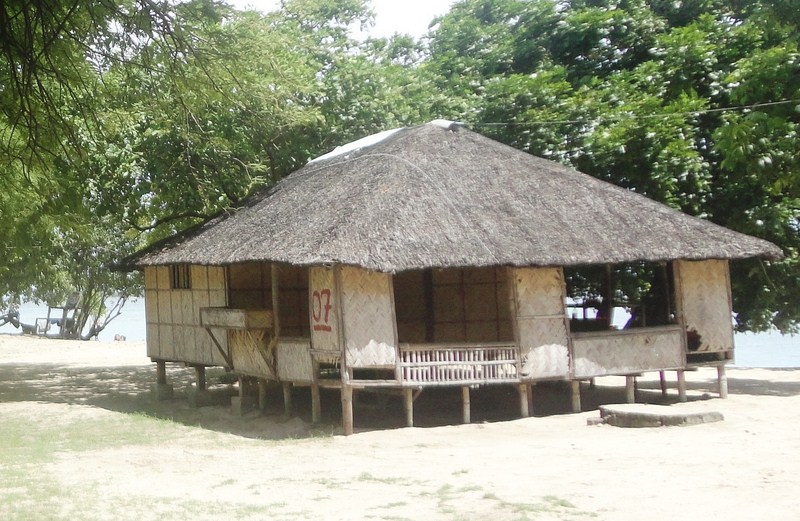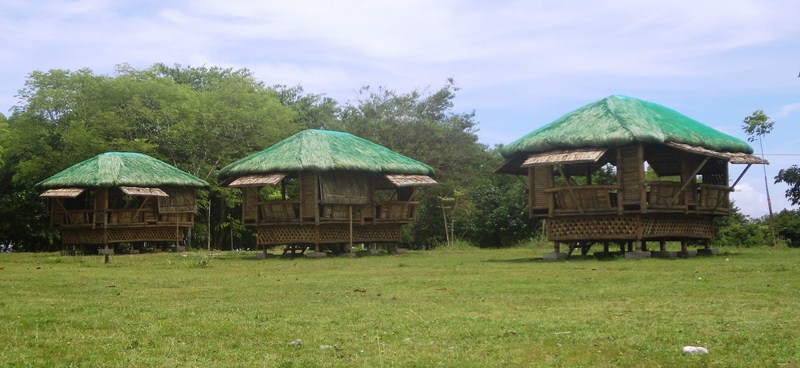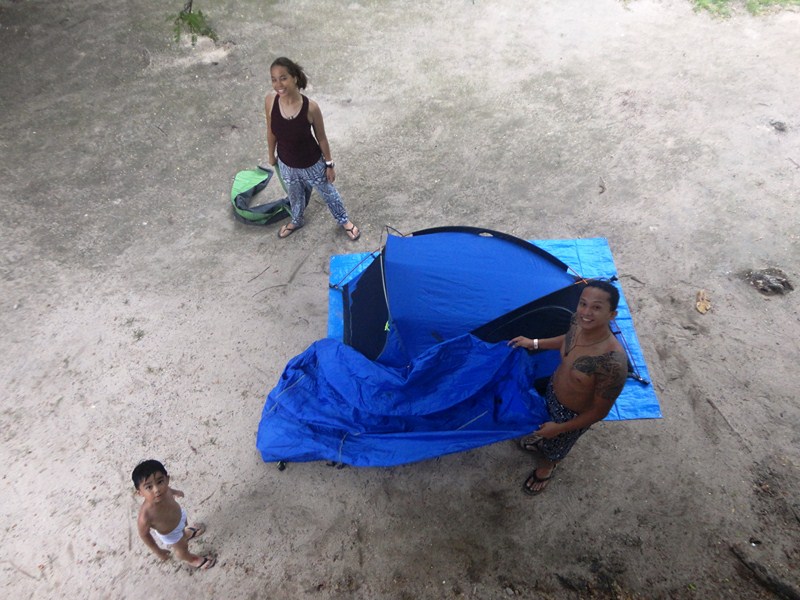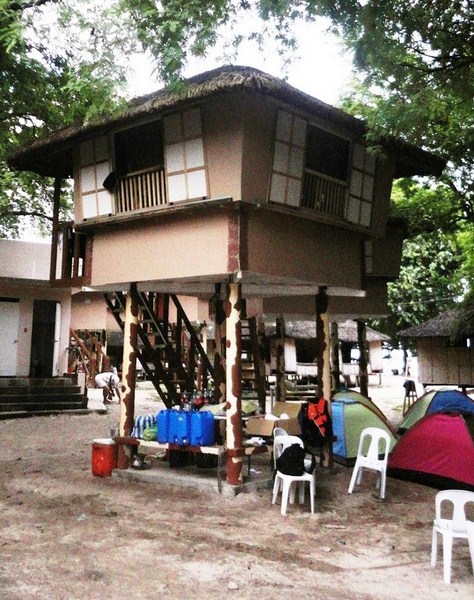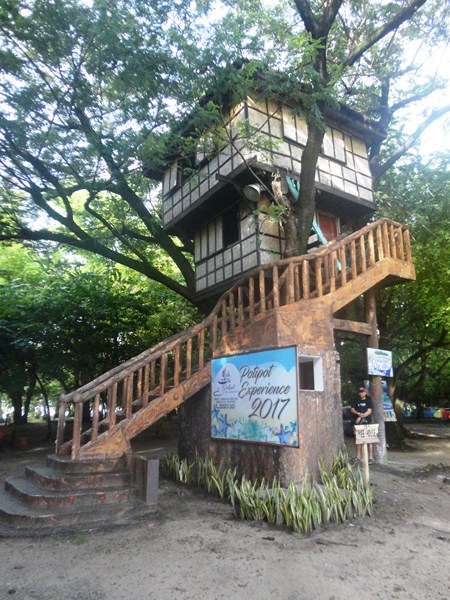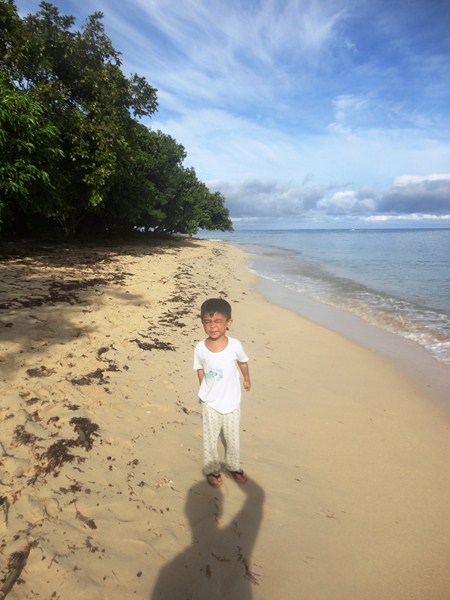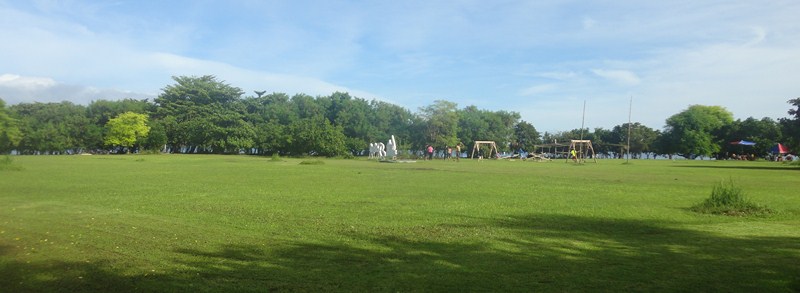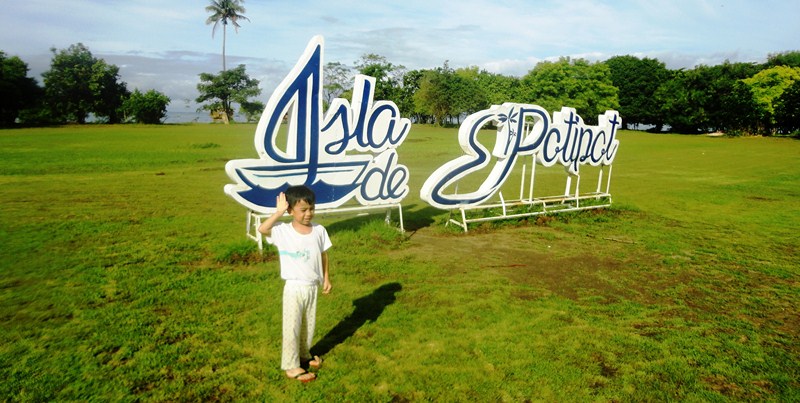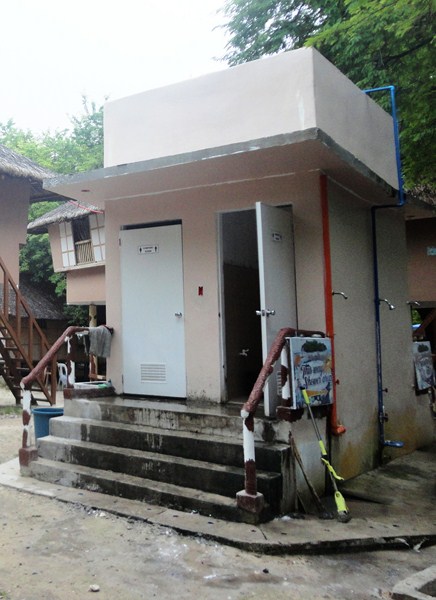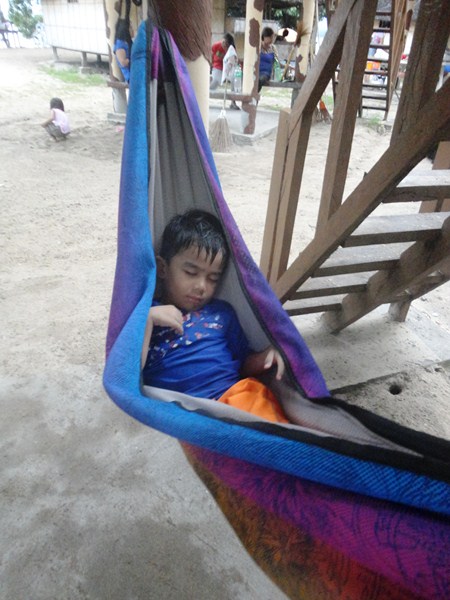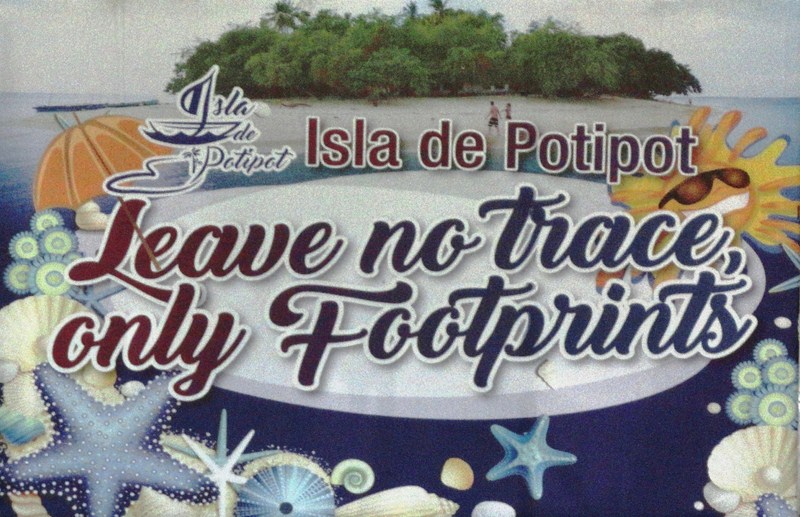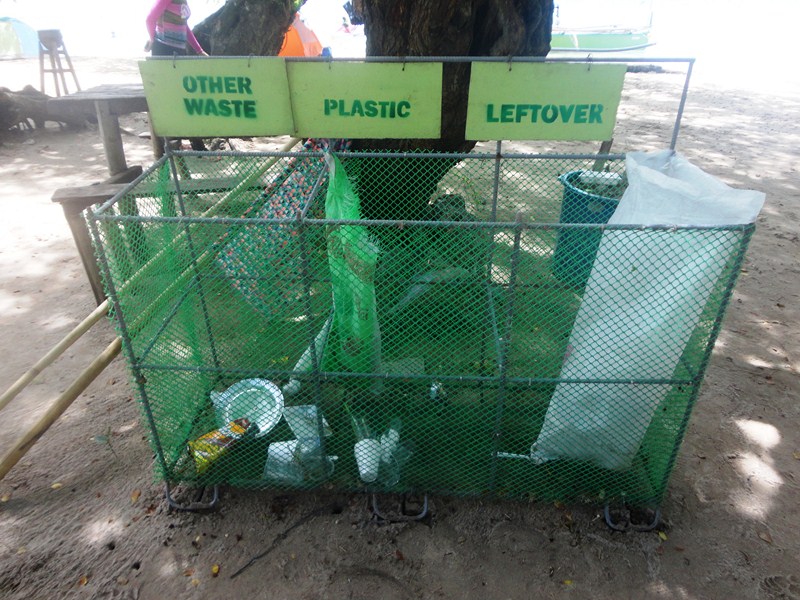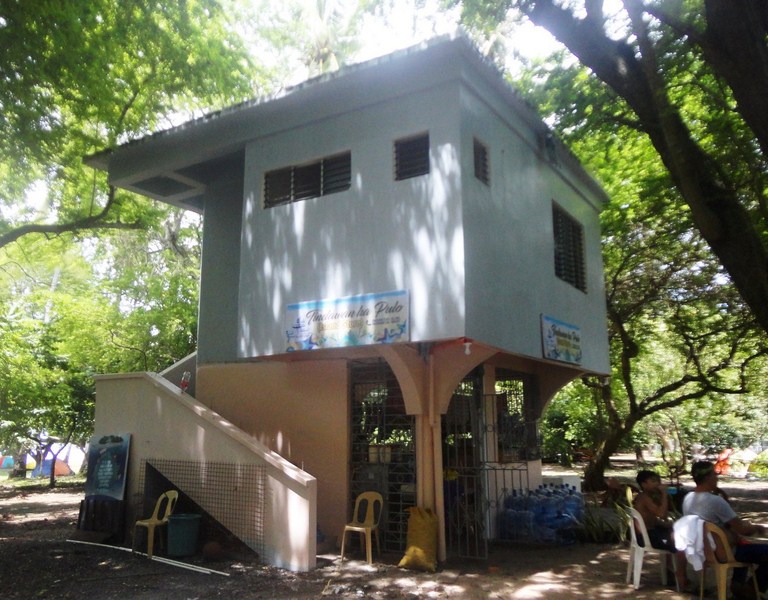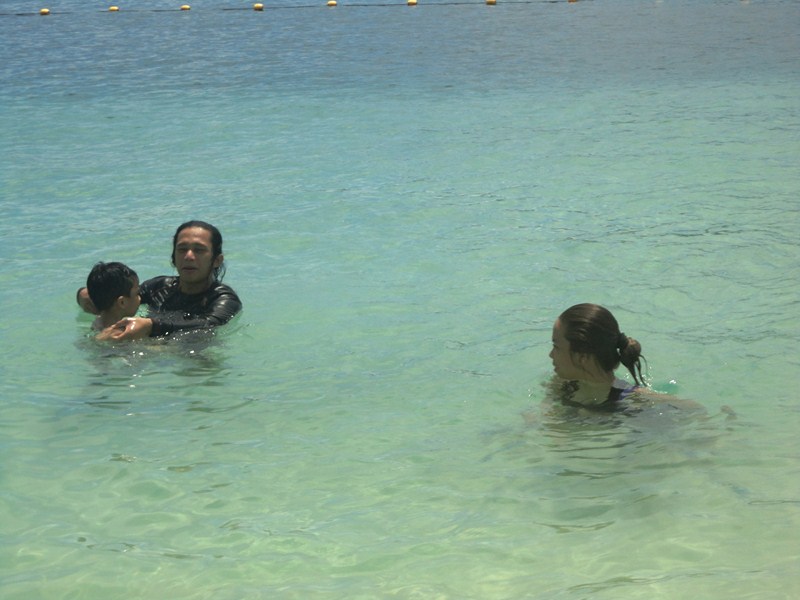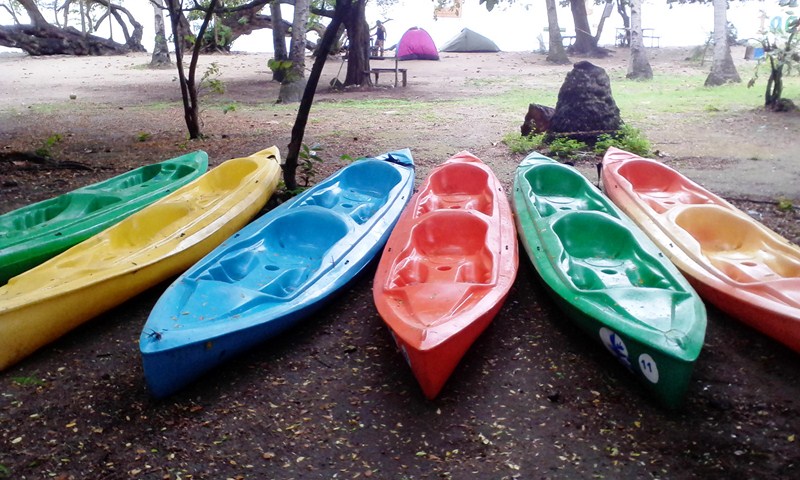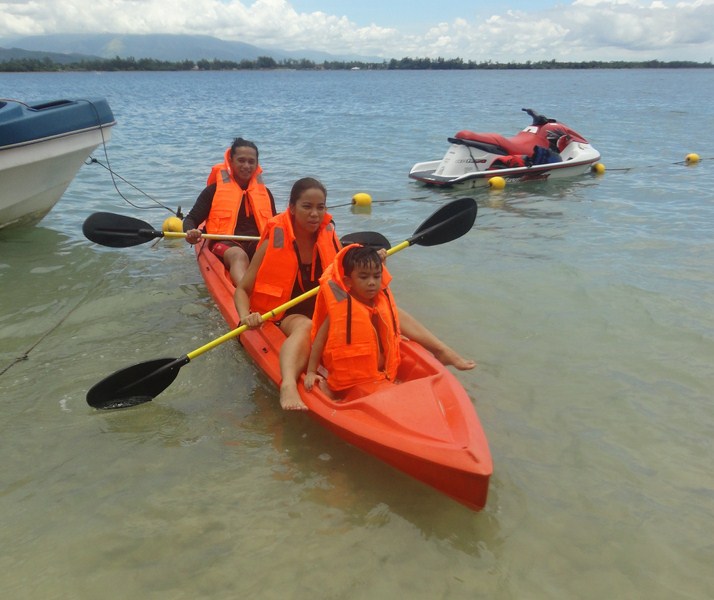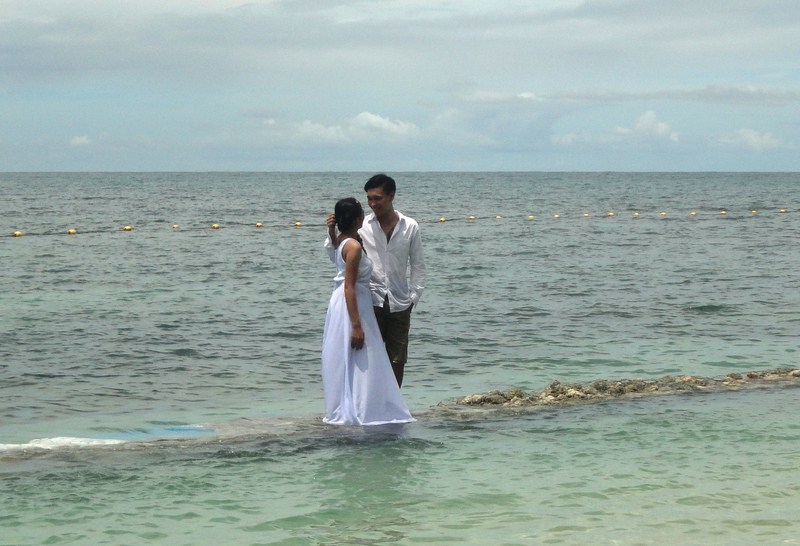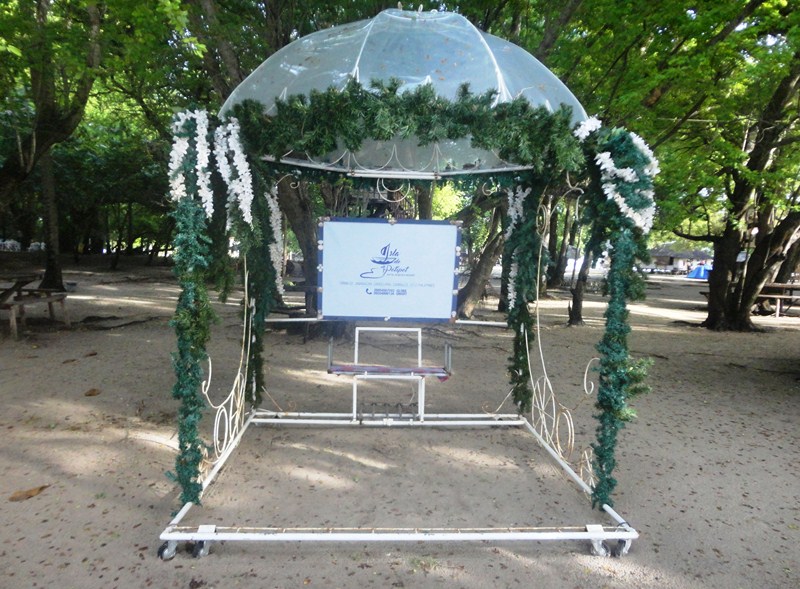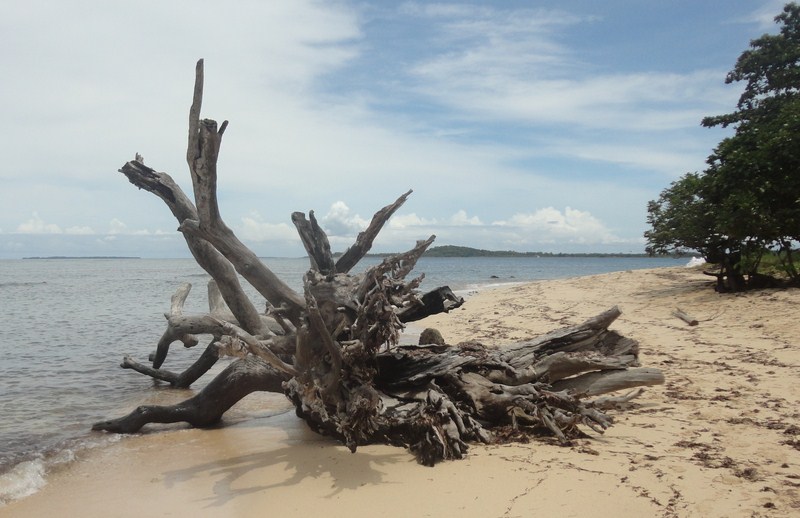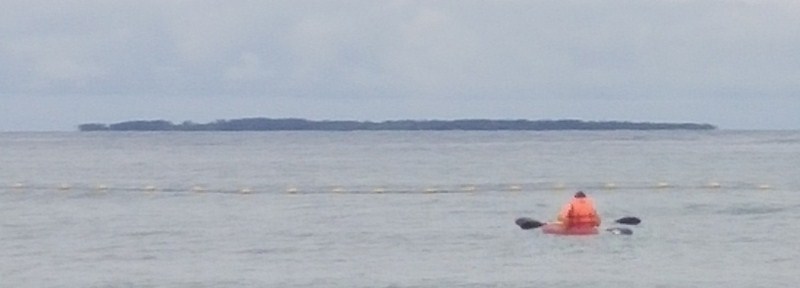After a lengthy 7.5-hour drive (we left Manila at 3:30 AM and made stopovers at Jollibee Subic or breakfast, and at the Cathedral of St. Augustine of Hippo in Iba), we arrived at Brgy. Uacon at the town of Candelaria (between Masinloc and Sta.Cruz) and parked my Toyota Revo at the residence of Mr. Joel Gonzales (mobile numbers 0977-2044869 and 0947-3218687), a friend of Bryan.
Check out “Cathedral of St. Augustine of Hippo“
As it was already lunchtime, Bryan prepared a lunch of pork tocino, hot dogs and fried fish with steamed rice. This done with, Joel loaded our gear on his tricycle, with Cheska and Kyle on board, for the short drive to the beach where our motorized outrigger boat to Potipot Island (or Isla de Potipot) awaited us. Jandy, Bryan and I just walked the short distance.
The closest island from mainland Zambales (about a kilometer away), we can actually see how near Potipot Island is from the beach of Uacon. The boat trip (PhP400/two-way) getting to the eastern side of the island (with its huge and colorful “Isla de Potipot” sign) just took a little over 10 minutes.
It was already overcast when we arrived at the island. From the shore, it was just a short walk to the reception center. Visitors to the 7.5-hectare, privately owned Potipot Island are charged PhP100 per head for a day trip and PhP300 for overnight.
There are no hotels or inns available on Potipot Island. As it was a long weekend (August 19-21), the island was brimming with tourists (it easily gets fully booked during weekends), many camped in tents near where the boats dock. Tent rentals are also available but it is not a regular service on the island.
Campers can eat their meals at a pavilion with tables, without having to pay an additional fee.
There is also a grilling area where they can grill their own food but they’ll have to bring everything, including the charcoal.
Others stayed in nipa cottages (PhP1,500, for 10-20-pax, and PhP2,000 for 5-10-pax) and more modern cottages on stilts (PhP2,500, 5-8-pax).
We opted to stay in the latter with our tent set up beside it for Kyle to experience his first camping. Jandy and I stayed at the very spartan, treetop height cottage on stilts which had a double bed with mosquito net. We also had a table with 4 chairs (all are available for free around the island on a first come, first serve basis).
For cooking, we brought our own butane gas stove (we have to be careful not to burn any tree as we could be fined). Nearby is a citadel-like tree house said to belong to the island’s owner.
Normally, at day’s end, visitors are treated to a stunning sunset along the beach but, as a low pressure area was in the day’s forecast, it was already starting to rain.
This small but pristine and breathtaking beach bumming paradise, also known as the Little Boracay of the North, has shores surrounded by creamy white sand (the island’s name is derived from the native words puti po meaning “it’s white”), and turquoise blue water and offshore coral.
A good beach camping destination, it also has a lush array of trees to provide much-needed shade. The different kinds of trees found here, some with roots extending out to the water, include mahogany, talisay, coconut, hanga (an indigenous source of petroleum nut oil), sampaloc, kamachile, guava, mango, duhat, suha, kamias, etc.
The center of the island is a grassy plain with another huge “Isla de Potipot” sign and a children’s playground.
There’s no potable water source in Potipot so we bought our water supply at the jump-off. The island has a number of clean and decent public shower rooms and toilets (one conveniently located just across from our cottage) so freshening up wasn’t much of a problem.
However, the water supply can lose pressure if a lot of people are taking a bath at the same time. Lighting on the island is provided by a generator so it is not totally dark at night. They also offer charging services, via solar panels, for any electronic gadget.
The stay-in caretakers were friendly and more than willing to help you if you ever need anything. For a minimal fee, we could also ask them to cook our food.
They’re strict about cleaning up and bringing your trash with you when you leave (“Leave No Traces Only Footprints signs are everywhere). Segregated (plastic, leftovers and other waste) waste bins can also be found.
Also nearby is a small sari-sari (convenience) store where we can buy bread, soft drinks, coffee, noodles, bottled water, snacks, canned goods, etc. as well as souvenirs, goggle and other knickknacks. Some vendors also sell foodstuff. However, to avoid inconvenience, it is still advisable to bring your own food and water when you go there. Liquor or alcoholic beverages are prohibited.
It was sunny the next day (I missed out on the beautiful sunrise) and, after breakfast, we were supposed to hop over to Hermana Menor Island, a 2-hour boat ride away. However, heavy waves made this impossible. Instead, Jandy, Bryan, Cheska and Kyle went swimming along the nearby shoreline.
Though calm, the crystal clear, warm waters here can get, within a few steps, from knee deep to neck deep. At the back part of the island (the part not facing the main shore of Zambales), you also have to be careful with sea urchins. Later, Cheska, Bryan and Kyle went kayaking around the island (PhP300/hour).
Or my part, I decided to circle the island and my leisurely walk took about 30 mins. On the opposite side of the island, facing the West Philippine Sea, is another campsite for those who want peace and quiet. The sand seems to be finer here and the waters clearer.
Along the way I passed a couple having a pre-nuptial photo shoot. There are also rock formations on the other side of the island (where the sun sets). The famous, iconic driftwood, located in a slightly rocky portion of the beach on the southwestern part, is the site of an obligatory photo shoot for tourists. At the northern side, sea grass are clearly visible underneath the clear waters.
The feel and ultimate charm of this relatively unknown and undiscovered little gem of an island was like Boracay during its pre-development years. Here, every now and then, you can bathe in its turquoise waters and stroll under its arboreal ceiling without bumping into boisterous tourists.
We left the island by noontime, again boarding Joel’s boat for the return trip back to the mainland. After a late lunch, gain prepared by Bryan, at Joel’s place, we left Uacon by 2:30 PM and proceeded on our return trip back to Manila, making stopovers at the Church of St. Monica in Botolan, a viewpoint in Subic and dinner at a Pancake House outlet along NLEX. We were back in Manila by 10:30 PM.
Check out “Church of St. Monica“
ADDENDUM
On June 19, 2018, exactly 10 months after our first visit, Cheska and Bryan, with some mountaineering friends, returned to Potipot Island for overnight camping.
Unknown to Cheska, Jandy, Kyle and I, this time with my wife Grace and her officemates, followed suit and stayed in treehouses some distance from their campsite.
That afternoon, during a break in the stormy weather (Typhoon Domeng was in town), Bryan proposed marriage to Cheska, with us in attendance, and she accepted. Watch the heartwarming marriage proposal video here.
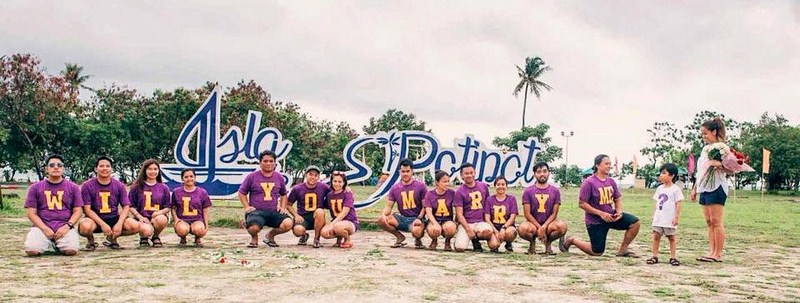
The Proposal. Bryan (third from right, with the “Me” shirt) popped the question to Cheska (at right) and she said YES. Kyle (wearing the “?”), between the two, acted as engagement ring bearer. Their friends wore individual lavender (Cheska’s favorite color) each with an individual letter which, when properly bunched together, spelled the words “Will you marry me?”
Isla de Potipot: Brgy. Uacon, Candelaria, Zambales. Mobile numbers: (0905) 456-7243 (Globe) and (0920) 499-9134 (Smart). Look for Arjay, Jamie or Flor. E-mail: isladepotipotmarketing@gmail.com. Instagram: www.instagram.com/isla_de_potipot. Facebook: www.facebook.com/isladepotipothotelandbeachresort.
How to Get There: To get to Brgy. Uacon, Candelaria by car (a 5-6-hour drive), take the North Luzon Expressway (NLEX) all the way to the Dau/Mabalacat Exit. For speed and ease of travel, travel the length of the Subic-Clark-Tarlac Expressway (SCTEX) to the Tipo Exit (the shorter route, through San Fernando – Lubao in Pampanga, passes through narrower roads and congested town centers). Upon exiting, pass through the Subic Bay Metropolitan Authority (SBMA), on to Subic town and then take the national road all the way to Candelaria, passing the towns of Castillejos, San Marcelino, San Narciso, San Felipe, Cabangan, Botolan, Iba, Palauig and Masinloc before Candelaria.
Sta. Cruz-bound Victory Liner buses also pass by Candelaria, the town just before Sta. Cruz). Get off at the Uacon Barangay Hall and, from there, take a tricycle (or even walk) to the nearest resort or the beach where you can get a boat to Potipot Island.

